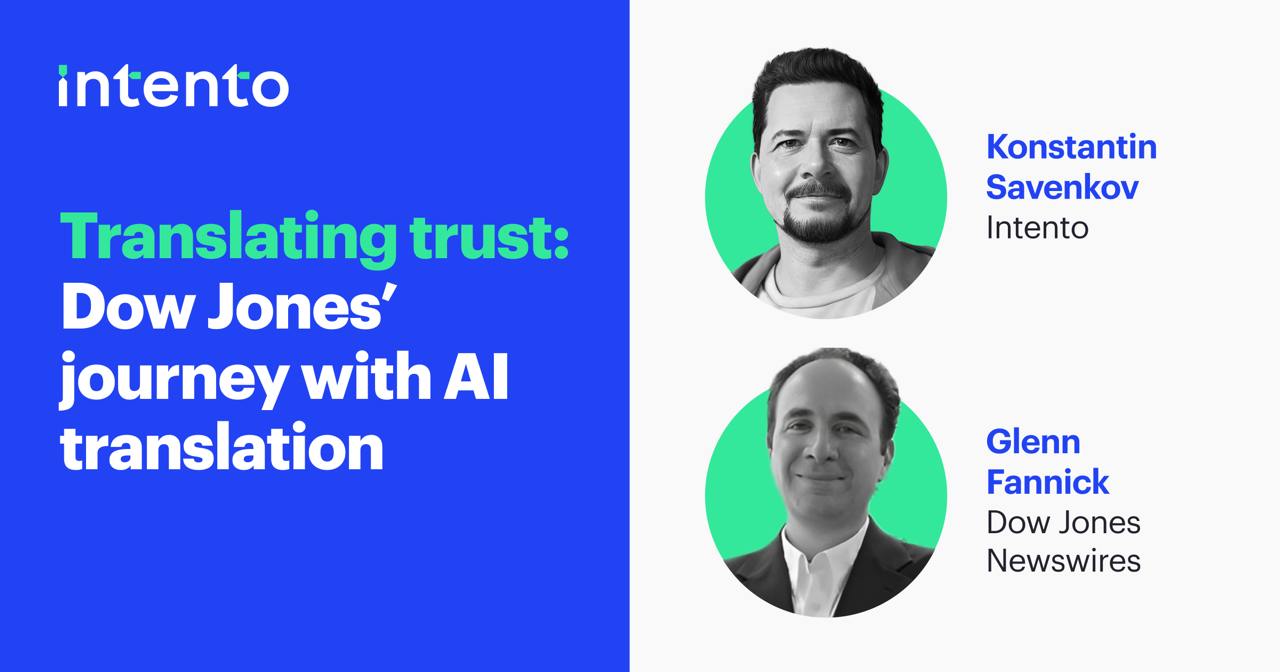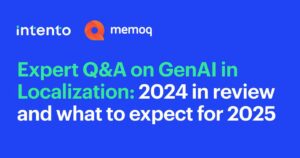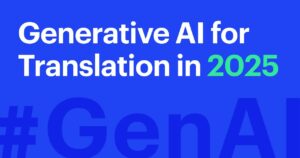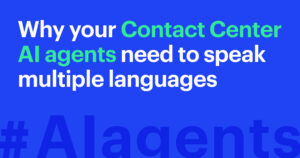After 125 years of delivering business news, Dow Jones sought to extend their news service beyond English-speaking markets at the same quality and speed their English product was known for. Working with Intento, they’ve successfully developed multi-agent translation workflows that now deliver financial news in multiple languages.
The conversation below took place between Glenn Fannick (Head of Commercial Strategy, Dow Jones Newswires) and Konstantin Savenkov (CEO & Co-Founder, Intento) during AMTA Virtual 2025.
Glenn Fannick from Dow Jones explained that “Newswires is the most widely distributed professional financial newswire in the world, reaching the most professional desks of any.” Yet their usage remained largely limited to English-speaking audiences.
Despite producing content in 12 languages through various partnerships and internal resources, “the content offerings, I would admit, are a bit fragmented and they’ve evolved over the years to not be one cohesive product offering,” Glenn noted. Dow Jones wanted to create a product for non-English speakers that would be “just as respected as our English product–just the same high quality.”
When machine translation reached its limits
Konstantin Savenkov from Intento pointed to a persistent gap in translation technology: “Neural machine translation has existed since 2017, but the vast majority of enterprise translation localization still relies on human effort, and many tasks–especially involving large-scale or real-time translation–remain unsolved.”
Enterprise translation requirements—including those for financial news—are multidimensional. Some are specific to the business, others differ by market or use case.
“For a company like Dow Jones, it’s important that the translation correctly uses business terminology,” Konstantin explained. “For the Newswires use case, it’s important to provide accurate translation of company names and financial information, including currencies, and correctly work with formatted text such as XML markup.”
For the Korean market, additional requirements include using an appropriate tone of voice, breaking long English sentences into shorter, simpler Korean ones to maintain a natural flow, and translating English/American idioms idiomatically. Generic machine translation wasn’t built for these demands.
Why standard AI translation didn’t meet requirements
We evaluated multiple translation models—from large global and local vendors—and observed similar challenges throughout testing.
As Konstantin put it, “All the models we tried provided inconsistent use of business terminology and inconsistent translation of proper nouns, such as company names.” Even with glossaries, critical issues persisted: incorrect business terms, numerical errors, currency mistakes (e.g., U.S. dollars replaced with Singapore dollars), and occasional omissions of key information.
For financial news that investors rely on to make decisions, these errors were deal-breakers.
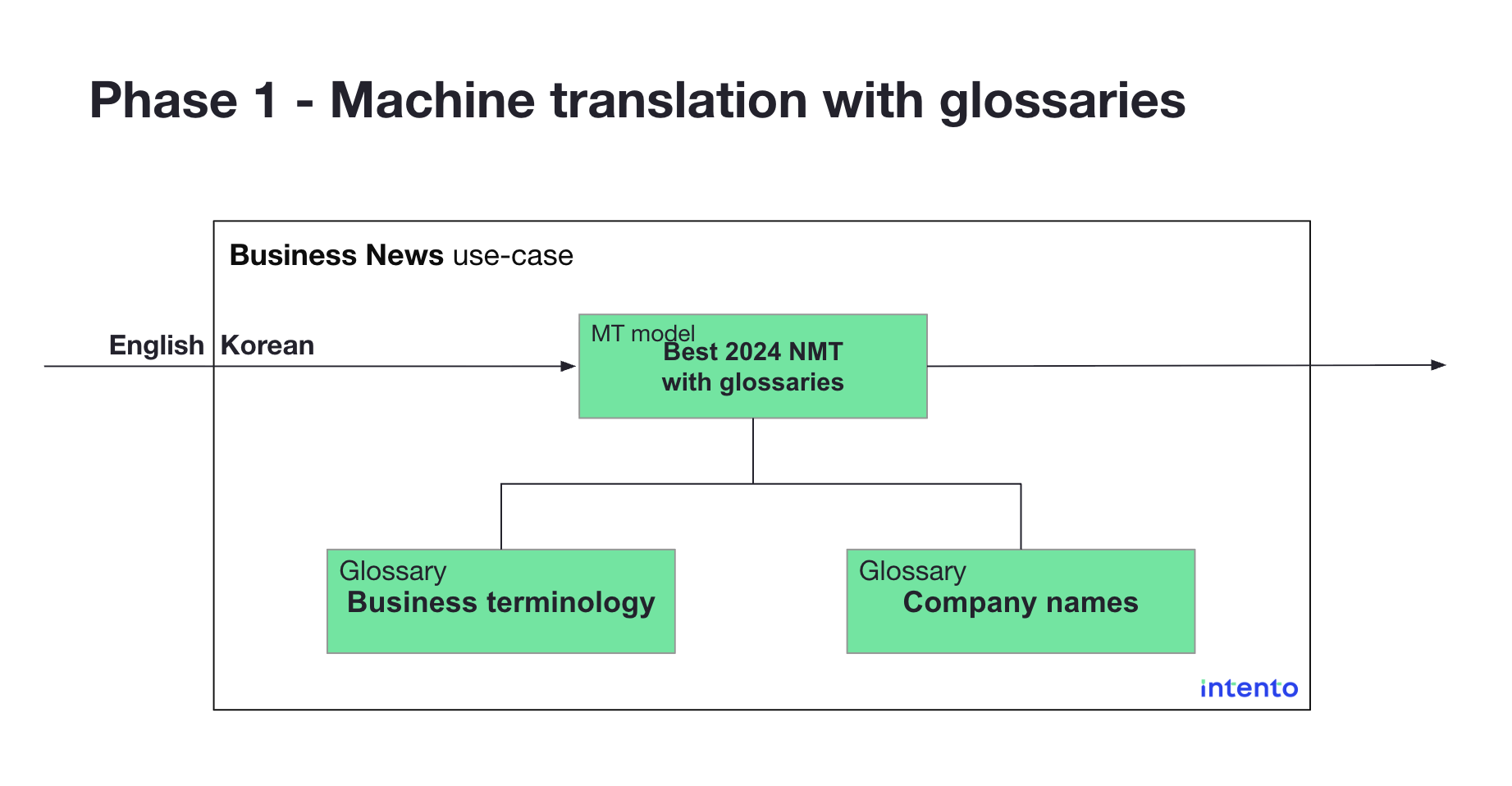
The LLM solution (with a twist)
After exhausting machine translation options—including extensive model customization—Dow Jones turned to large language models (LLMs).
“LLMs can take any instruction as input and produce output as instructed, and that enabled us to tailor instructions to address specific business requirements,” Konstantin explained.
We selected “a state-of-the-art 2024 large language model” as our base and crafted prompts to address machine-translation shortcomings. However, we found that “large language models have limited attention spans. When the glossary included in the prompt was too large, costs went up and quality went down.”
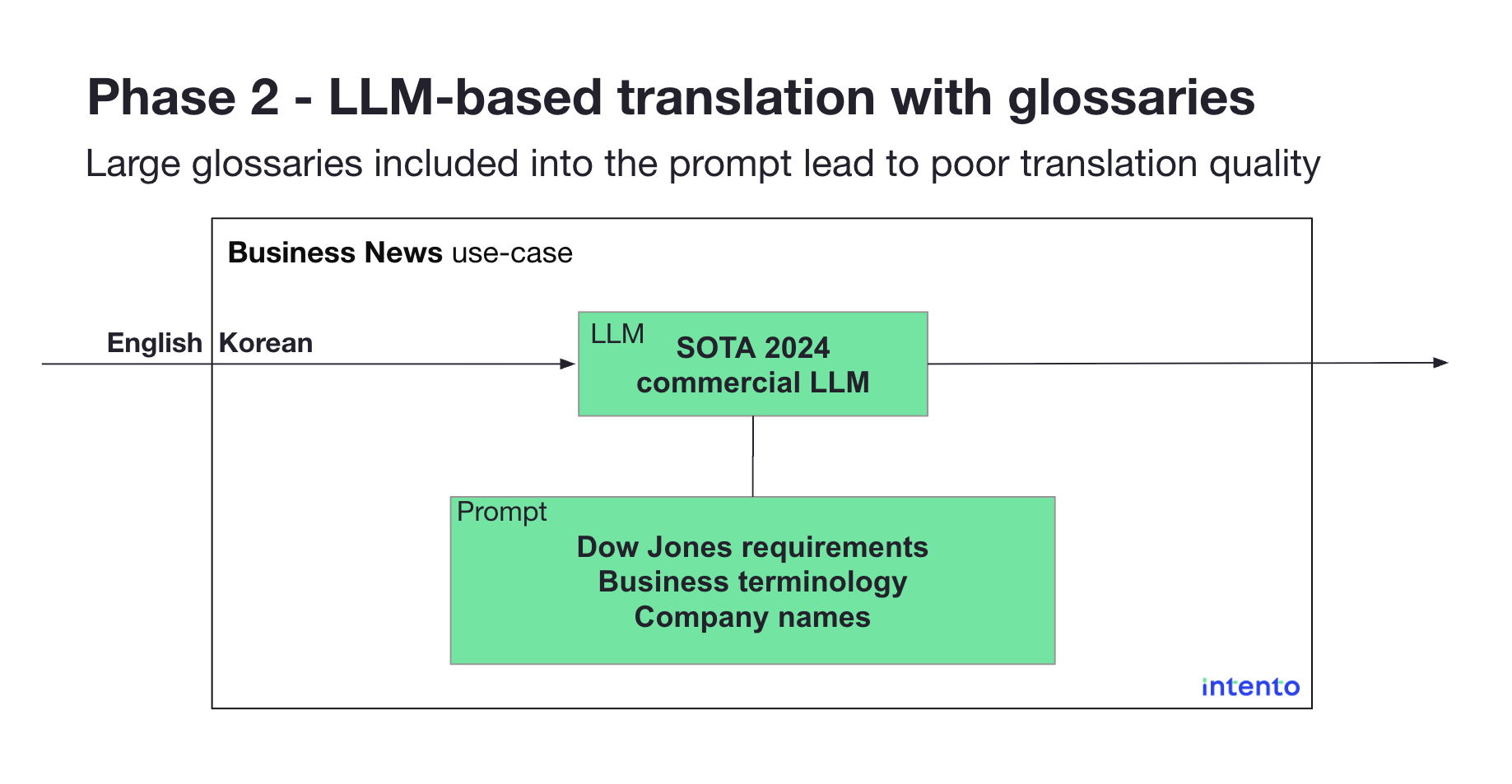
The solution to this problem is called retrieval-augmented generation (RAG), where we included not the whole data set, but a small part relevant to the translated text.
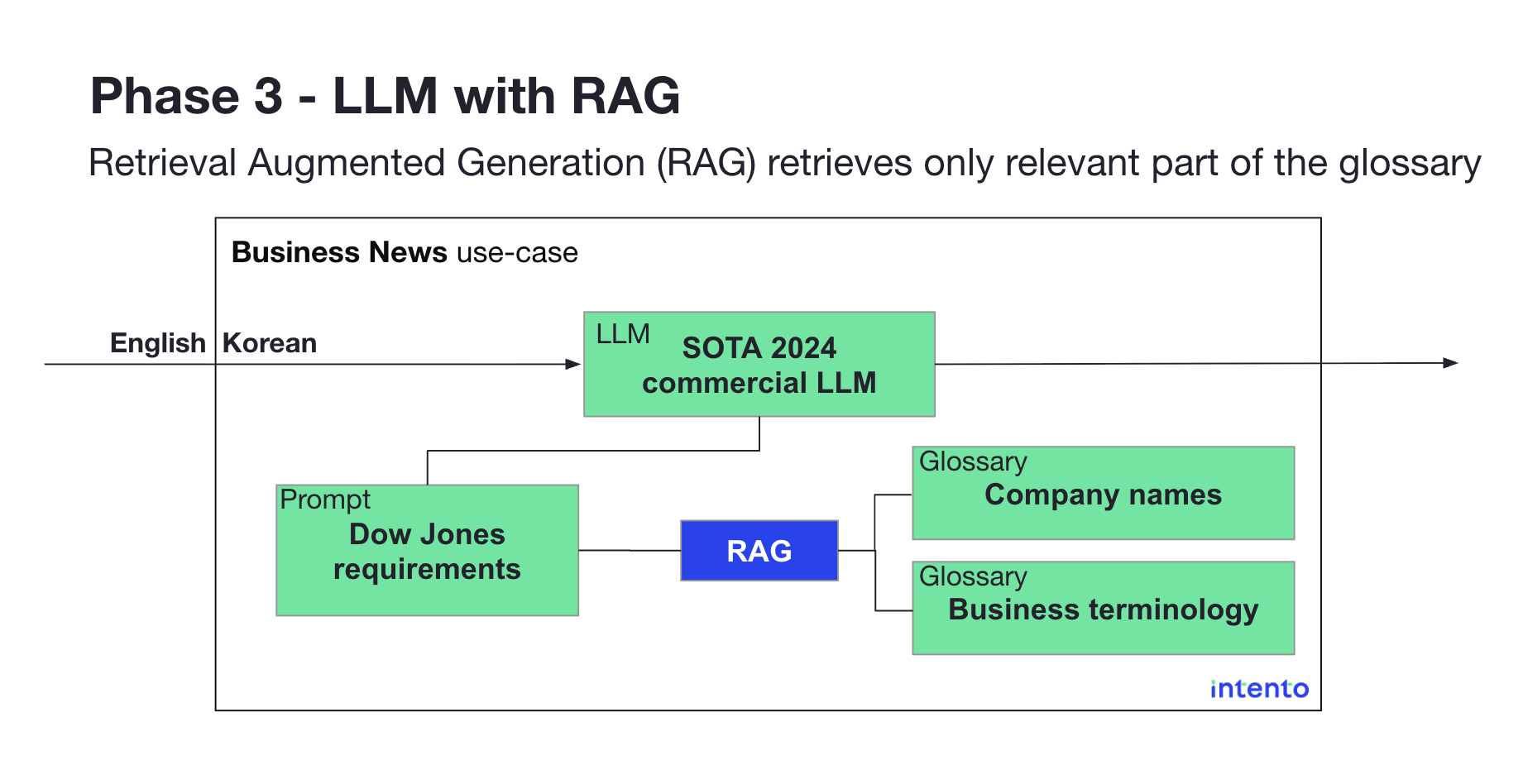
Our next iteration combined an LLM with Dow Jones–specific translation requirements embedded in the prompt, and RAG using Dow Jones glossaries stored in the Intento Language Hub.
This improved financial terminology, but two specific issues remained: formatted text broke, and Asian languages occasionally got mixed. After more testing, we switched to an LLM better suited to these requirements.
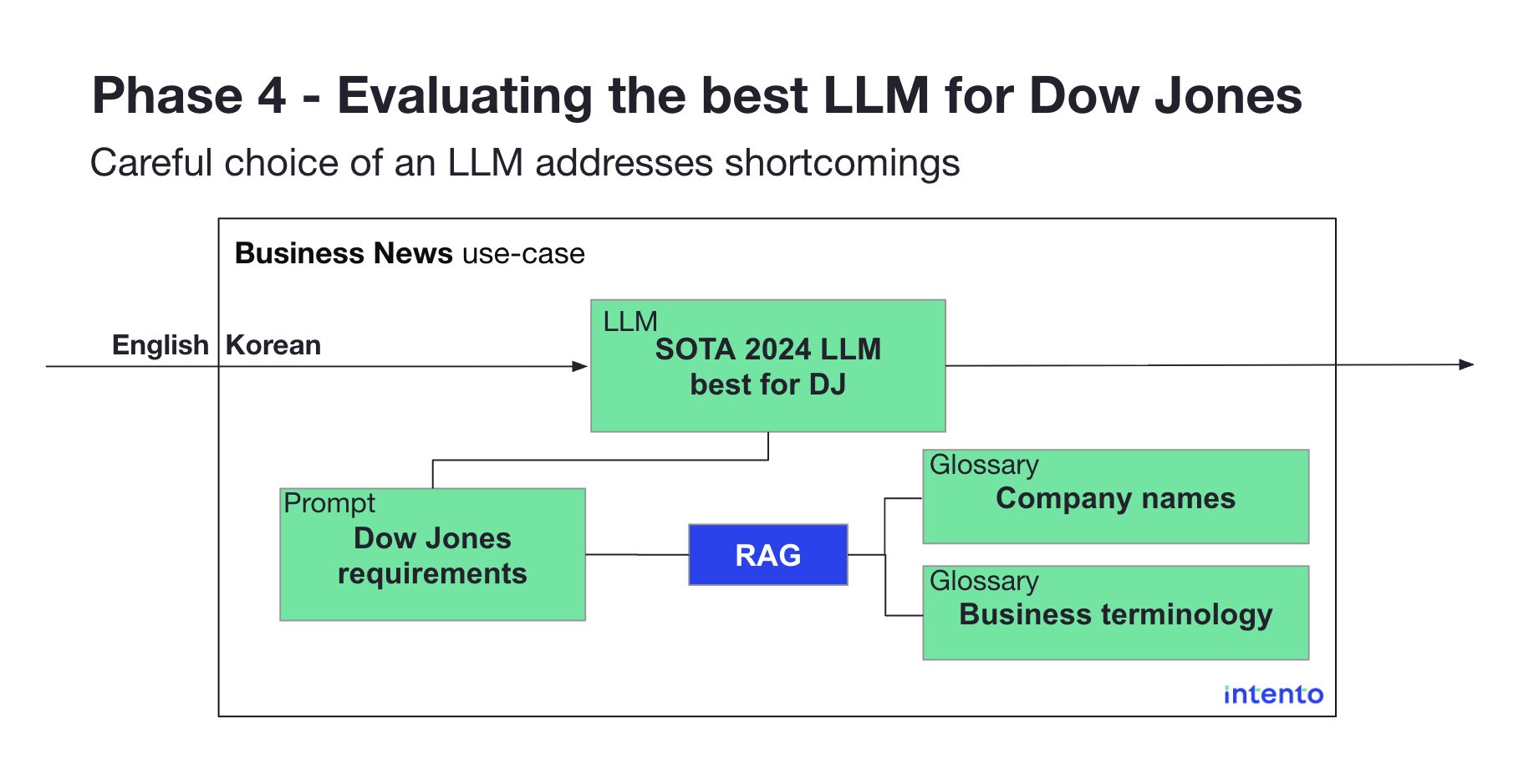
Building multi-agent translation workflows
Dow Jones tested extensively and kept refining the system.
“We provide tools to maintain and update GenAI prompts in production,” Konstantin explained the Intento approach to updates. Through multiple iterations, Dow Jones improved handling of proper nouns and tone of voice, making translations more natural without sacrificing accuracy.
As the system evolved, we encountered a common LLM challenge: “New additions to the prompt may make LLM follow prior instructions less accurately.” We developed multi-agent workflows where “instead of translating the text in one go with one prompt, we identify groups of requirements and build a dedicated AI agent that can improve translation for those specific requirements.”
In this workflow, one AI agent improves the source text to make it more translatable, another runs the translation, and additional agents assess and improve quality. Each agent focuses on specific tasks like terminology consistency, tone of voice, or formatting, which allows for more precise control than a single all-purpose model.
AI elevating human work
Glenn emphasized, “Our editors are involved every step of the way–from the training, prompting, overseeing, and testing before a language goes live–working with the Intento team very closely.”
The technology isn’t replacing journalists: “This process allows us to move our journalists higher up the chain to allow them to do more critical work and less mundane, I would say, routine articles. So this is very much about right-sizing and allowing our team to do the best work they can do.”
For Dow Jones, quality control remains paramount. As Glenn put it: “If the machine makes mistakes, we also have a process for correcting them,” much as they have processes for correcting human errors.
Choosing the right technology partner
Glenn explained their choice of Intento: “One of the things that attracted us about Intento was that they had this philosophy of using the best of what’s out there and, I kind of think of it as a clearinghouse of APIs, being able to connect into all these LLMs and allow us to go with the right LLM for the right language pair.”
This flexibility was crucial, as Dow Jones “tends to use the best-of-breed. If one model is better than another in a certain language, we’ll use that.”
Konstantin noted that Dow Jones was unusually engaged compared to our typical customers: “For many customers, we do pretty white-glove service, taking care of the whole setup and maintenance. However, the Dow Jones crew wants to control every aspect of the solution to address very nuanced translation and editorial requirements, so we provided them tools for that.”
What Dow Jones and Intento created is a practical implementation of AI that enhances rather than replaces human expertise — allowing Dow Jones to extend their high-quality journalism to a global audience.
